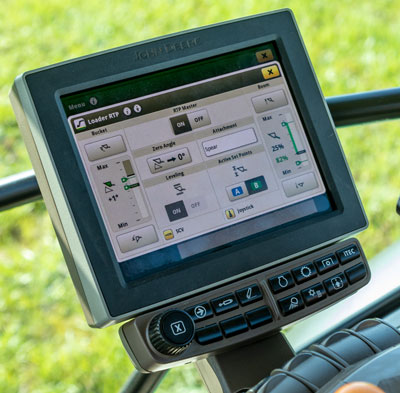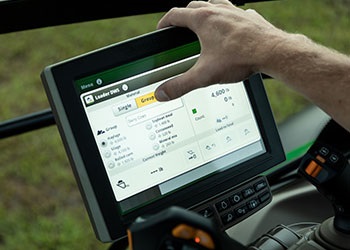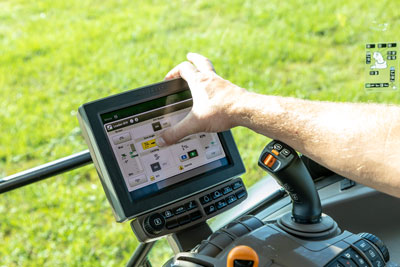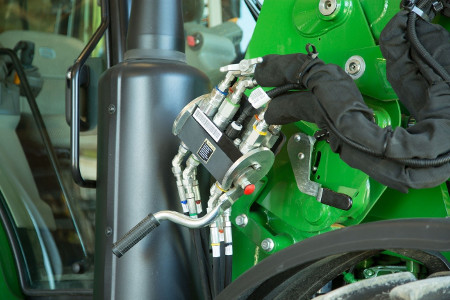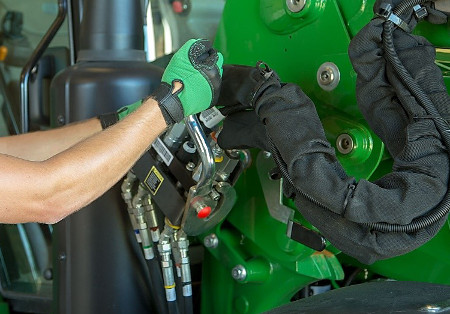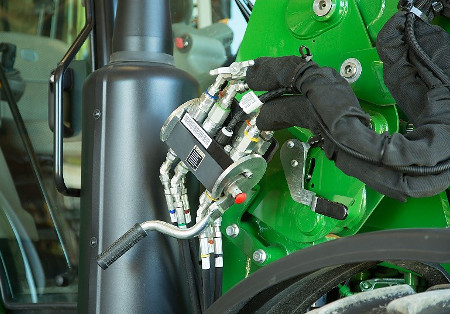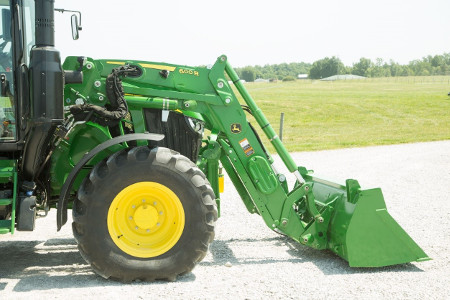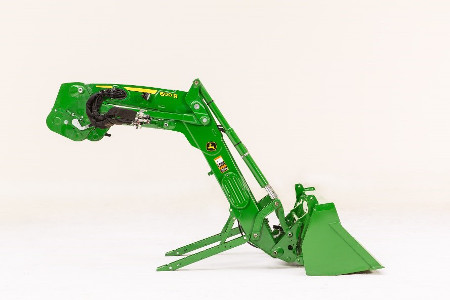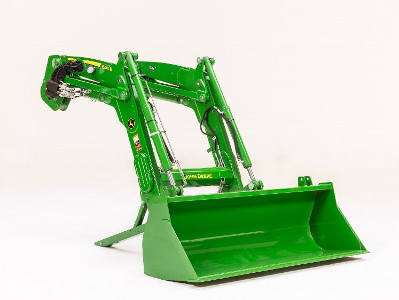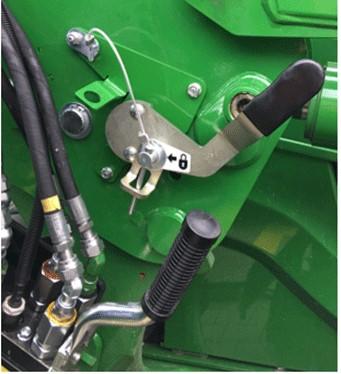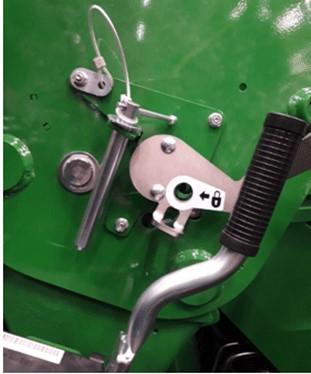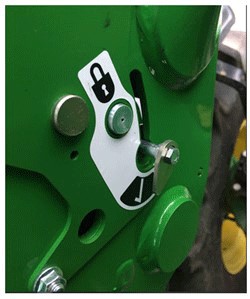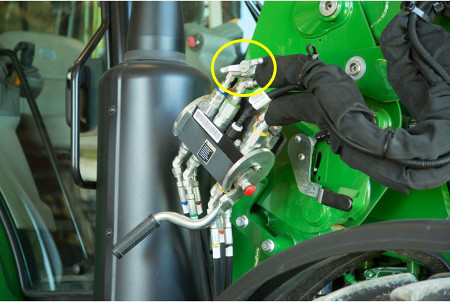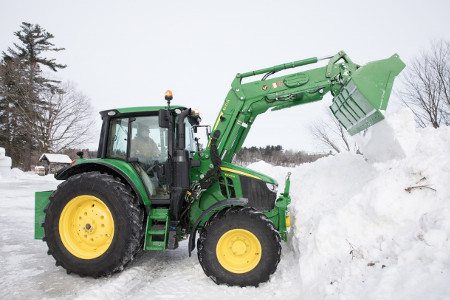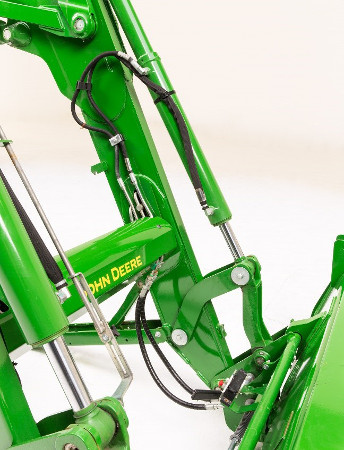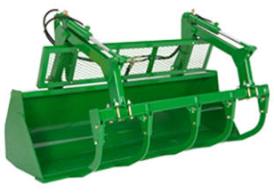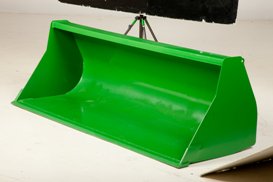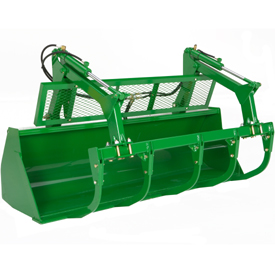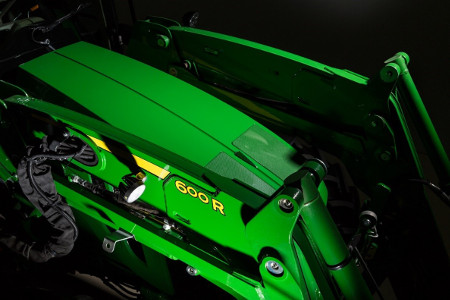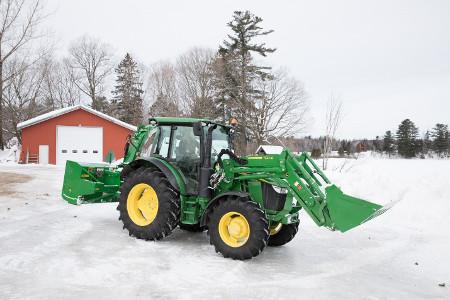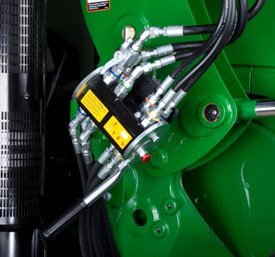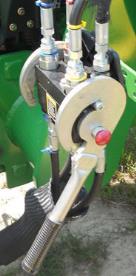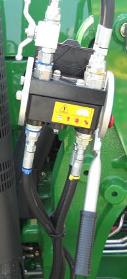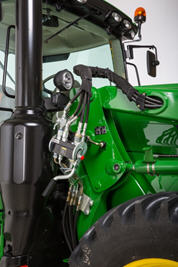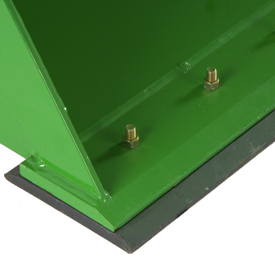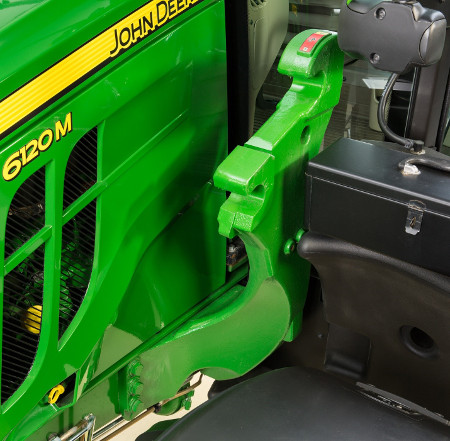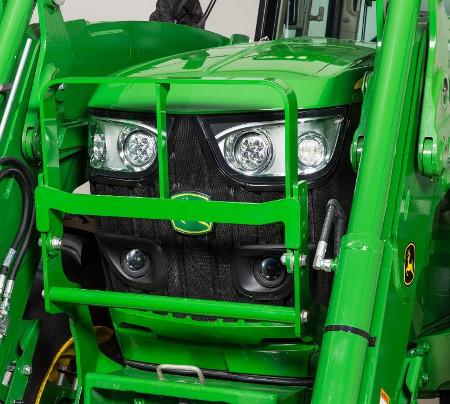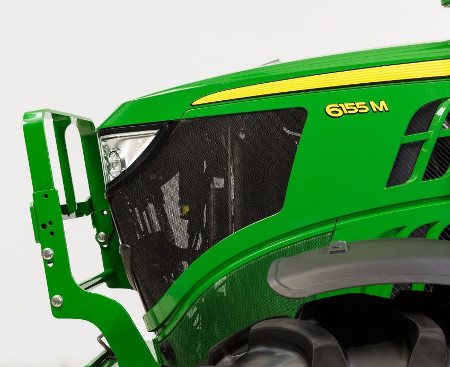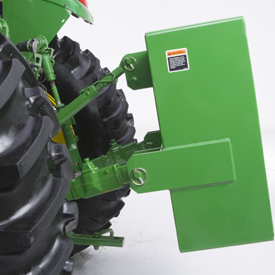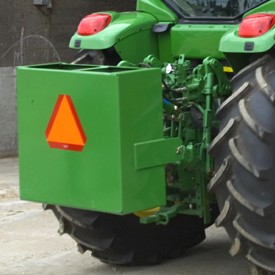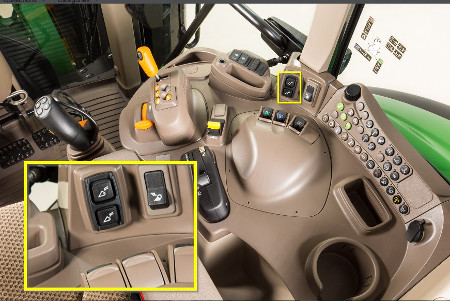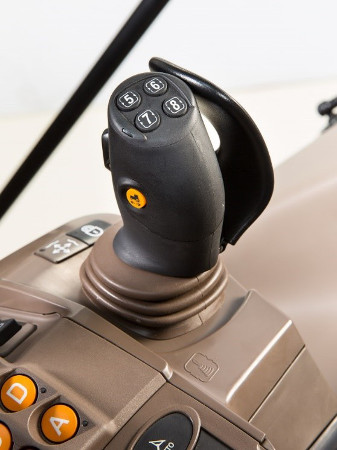Our loader technology offerings are designed to enhance the material handling experience of your mid-model year 2022 and newer 6R 110 to 6R 250 Tractors when equipped with the electric joystick and mid-valves. Loader Technology includes the necessary harness, controller, sensors, and hardware to unlock four key features, making your material handling tasks easier and more efficient and taking advantage of the following.
- Dynamic Weighing System (DWS)
- Return to Position (RTP)
- Level to Horizon (LTH)
- Electronic self-leveling (ESL)
Loader Technology features when ordered.
Return to Position (RTP)
Return to Position (RTP) is a convenient feature enables the loader boom and bucket to automatically move to preset positions with ease. Operators can save specific boom upper height, lower height, and two different bucket angles for both settings A and B. To operate turn ON in RTP run page then simply engaging the joystick past a built-in detent, the loader dynamically responds to axis forward, back, left, or right, automatically returning the boom and bucket to the predetermined positions. Setting limits is easy from the RTP run page. To achieve this, set loader to the desired position then press the on-screen button. This function is particularly useful for repetitive tasks such as clearing a wagon, operating in a shed lower than max boom height, or setting a bucket angle for repeated dumping then returning bucket to zero. Additionally, re-zeroing implements is made easy with a dedicated zero button on the Return to Position (RTP) run page. Custom run pages can be created to incorporate RTP and DWS displays together to match your operating needs.
 Mid-model year 2022 6R Tractor E-ICV joystick
Mid-model year 2022 6R Tractor E-ICV joystick
Dynamic Weighing System (DWS)
Dynamic Weighing System (DWS) feature offers real-time display of the current weight loaded on the loader attachment, such as a bucket, bale spear, or forks. This continuous weight monitoring eliminates the need for the tractor to stop for weighing, enabling the operator to accurately fill the bucket to the desired target weight without interrupting the workflow for a time-consuming weighing cycle. Furthermore, operators can easily record the weight with a simple push of the joystick button.
In addition, the DWS enables operators to create and save single material groups, such as bales, feed, or fertilizer, and even set up a material group comprising up to six different materials. The system displays and tracks the selected material group, providing a record of count, minimum, maximum, and average weights. Moreover, the weighing system can register multiple units. For instance, within a single material group, operators can count bales by 1, 2, or 3 during each loading cycle.
When operating the material group from the DWS run page, operators can simply select different stored material groups and record the weight as they load. As the weight is recorded, it counts down to zero, and a green checkmark appears next to the material to indicate completion, allowing the process to be repeated until all materials have been added. At any time while the material is being loaded, you can pause that material by selecting a different material then return to it at any time while using the material group. This is great for layering products into a feed wagon by not needing the mixer turned on and avoid over mixing.
A bar diagram and displayed values provide clear visual indicators of how much weight of the current component is still needed to reach its target weight.
The Dynamic Weighing System (DWS) is particularly valuable for use in windy feed yards. It enables operators to weigh lightweight commodities in the shed without the risk of blowing feed across the yard when delicately adjusting the load on the feed wagon to reach a target weight. This capability significantly enhances operational efficiency and helps maintain a clean feed yard environment, especially in challenging windy conditions.
Level to Horizon (LTH)
This feature ensures that the attachment is leveled parallel to the horizon, rather than maintaining the same angle as the tractor, as seen with conventional loader leveling systems. This means that when operating in hilly terrain, through waterways, or moving in and out of farm buildings, the pallet, fork, bucket, or other attachment actively adjusts the carrier to a horizontal position reducing the risk of spilling. If the operator prefers to maintain a different angle for specific tasks, they can easily disable this feature through the tractor display. It's important to note that Level to Horizon (LTH) is compatible with both self-leveling and non-self-leveling loaders. On display changes from LTH Level to Horizon to ESL Electronic self-leveling is effortless and is offered to best match your conditions.
Loader camera option when ordered with Loader Technology package (code 9662)
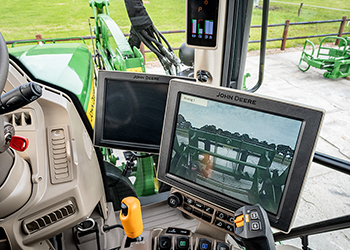 Tractor showing the loader camera image
Tractor showing the loader camera image
The loader camera offers visibility of the loader carrier and surroundings, providing a convenient view of the carrier's hooks for easy attachment connections. Additionally, when using pallet forks, the camera provides a clear view of the forks, facilitating effortless pallet handling. The video feed from the camera is displayed on the built-in display of the 6R Tractor.
The camera harness comes pre-installed inside the boom when Loader Technology has been optioned. The harness provided has an extended length of cable allowing for positioning the camera in a different location if desired, offering flexibility to accommodate specific operational preferences. Camera can be activated through a trigger such as forward direction or an SCV function.
Benefits
- Fast connection of attachments
- No damage to pallets and goods loaded on forks and spears
Electronic self-leveling (ESL)
The Electronic self-leveling (ESL) feature ensures that the bucket positioning is maintained at any range of the boom. It can be conveniently activated or deactivated from the RTP run page, offering operators flexibility in controlling the leveling operation. Toggling between ESL and Level to Horizon (LTH) is as simple as selecting the desired leveling operation through the display. Furthermore, ESL is compatible with both self-leveling and non-self-leveling loaders, providing versatility and convenience for operators across different operating conditions and loader configurations. If you find yourself liking NSL loaders at times but require MSL during other loader operations, then maybe LTH or ESL could be right for you?
The loader technology offers several benefits that enhance efficiency and precision in material handling:
- Faster and easier loading of goods with the Return to Position (RTP) feature, eliminating the need for manual control of heights and angles to navigate around trailers and sheds.
- On-the-go weighing capability, saving time by eliminating the need to stop for weighing cycles and ensuring accurate loading without returning excessive feed to commodity location.
- Convenient loading from both sides of the feed wagon and rapid attainment of target weight in the bucket without interruptions waiting for weight.
- Precise dumping of weight into mixers, minimizing windblown commodity loss on the farm.
- Automatic bale counting with minimum, maximum, and average bale size, streamlining bale handling operations.
- Enhanced control and avoidance of spilling goods during transport with the Level to Horizon (LTH) feature, contributing to a cleaner and more organized material handling process.

